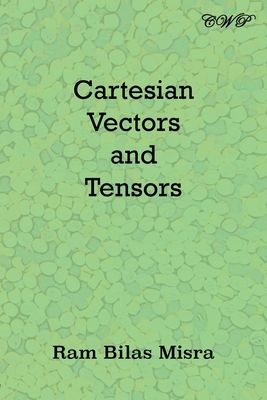Home
Linear Vector Spaces and Cartesian Tensors / Edition 1
Loading Inventory...
Barnes and Noble
Linear Vector Spaces and Cartesian Tensors / Edition 1
Current price: $192.99


Barnes and Noble
Linear Vector Spaces and Cartesian Tensors / Edition 1
Current price: $192.99
Loading Inventory...
Size: OS
*Product Information may vary - to confirm product availability, pricing, and additional information please contact Barnes and Noble
Linear Vector Spaces and Cartesian Tensors
is primarily concerned with the theory of finite dimensional Euclidian spaces. It makes a careful distinction between real and complex spaces, with an emphasis on real spaces, and focuses on those elements of the theory that are especially important in applications to continuum mechanics. The geometric content of the theory and the distinction between matrices and tensors are emphasized, and absolute- and component-notation are both employed. While the mathematics is rigorous, the style is casual.
Chapter 1 deals with the basic notion of a linear vector space; many examples of such spaces are given, including infinite-dimensional ones. The idea of a linear transformation of a vector space into itself is introduced and explored in Chapter 2. Chapter 3 deals with linear transformations on finite dimensional real Euclidean spaces (i.e., Cartesian tensors), focusing on symmetric tensors, orthogonal tensors, and the interaction of both in the kinetically important polar decomposition theorem. Chapter 4 exploits the ideas introduced in the first three chapters in order to construct the theory of tensors of rank four, which are important in continuum mechanics. Finally, Chapter 5 concentrates on applications of the earlier material to the kinematics of continua, to the notion of isotropic materials, to the concept of scalar invariant functions of tensors, and to linear dynamical systems. Exercises and problems of varying degrees of difficulty are included at the end of each chapter. Two appendices further enhance the text: the first is a short list of mathematical results that students should already be familiar with, and the second contains worked out solutions to almost all of the problems.
Offering many unusual examples and applications, Linear Vector Spaces and Cartesian Tensors serves as an excellent text for advanced undergraduate or first year graduate courses in engineering mathematics and mechanics. Its clear writing style also makes this work useful as a self-study guide.
is primarily concerned with the theory of finite dimensional Euclidian spaces. It makes a careful distinction between real and complex spaces, with an emphasis on real spaces, and focuses on those elements of the theory that are especially important in applications to continuum mechanics. The geometric content of the theory and the distinction between matrices and tensors are emphasized, and absolute- and component-notation are both employed. While the mathematics is rigorous, the style is casual.
Chapter 1 deals with the basic notion of a linear vector space; many examples of such spaces are given, including infinite-dimensional ones. The idea of a linear transformation of a vector space into itself is introduced and explored in Chapter 2. Chapter 3 deals with linear transformations on finite dimensional real Euclidean spaces (i.e., Cartesian tensors), focusing on symmetric tensors, orthogonal tensors, and the interaction of both in the kinetically important polar decomposition theorem. Chapter 4 exploits the ideas introduced in the first three chapters in order to construct the theory of tensors of rank four, which are important in continuum mechanics. Finally, Chapter 5 concentrates on applications of the earlier material to the kinematics of continua, to the notion of isotropic materials, to the concept of scalar invariant functions of tensors, and to linear dynamical systems. Exercises and problems of varying degrees of difficulty are included at the end of each chapter. Two appendices further enhance the text: the first is a short list of mathematical results that students should already be familiar with, and the second contains worked out solutions to almost all of the problems.
Offering many unusual examples and applications, Linear Vector Spaces and Cartesian Tensors serves as an excellent text for advanced undergraduate or first year graduate courses in engineering mathematics and mechanics. Its clear writing style also makes this work useful as a self-study guide.


















